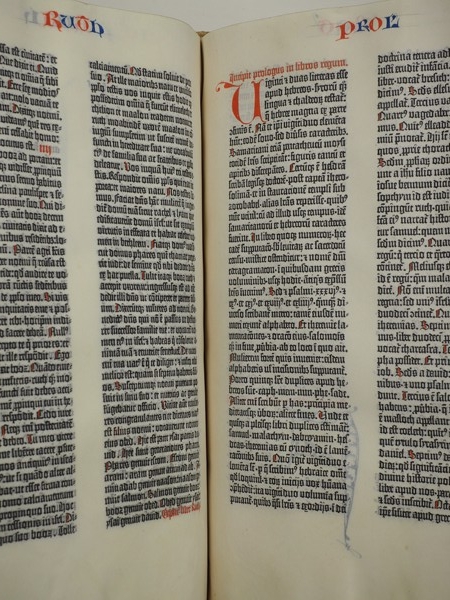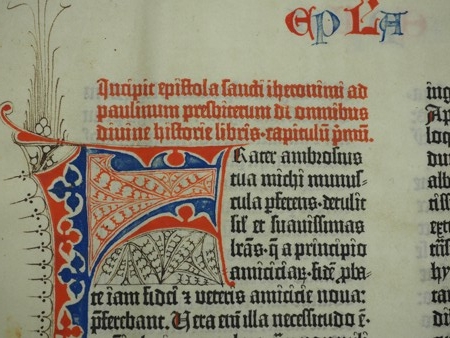Johann Gutenberg (c. 1398–1468) began printing the Bible, initially in forty-line columns, in about 1454–1455. After printing nine pages, starting both at the Preface of Saint Jerome and 1 Kings—probably two weeks of work—at the end of the first page of Genesis he decided to alter the page design, increasing the number of lines per column from forty to forty-one. After printing one page in this manner, he added one more line, and the B-42, or forty-two-line Bible, was born. During my tenure at CASVA I examined this revision process, first with the book itself at the Library of Congress and subsequently with the aid of digital images. The graphic dimensions of Gutenberg’s revisions serve as a fitting overture to my monograph, which details the development of the aesthetic of the printed page by the pioneers of the “black art.”
The height of the columns underscores that the transformation
40-41-42 was complex: by measurement, the forty-one- and forty-two line columns are not the original forty plus one line and forty-one plus one line. In fact, the forty-two-line columns are shorter than the forty-line ones. Moreover, as confirmed by considering lines 5 through 8 of the recto of page 1 of the first quire, at the opening of the Preface of Saint Jerome ([-] cula perferens, detulit / . . . veteris amicitiae nova:), Gutenberg never inserted leading between lines of type. To solve this typographic puzzle, scholars have postulated that he filed the types. While plausible, this hypothesis implicitly counters the claim that the 40-41-42 transformation was implemented to reduce costs by saving about 5 percent of the paper or vellum: each “reduction” implies the precise filing of thousands of pieces of type for the potential savings of 2.5 percent of materials, at considerable labor cost and the expense of countless damaged pieces of type. Likely such a complex change reflects more than cost-cutting intentions.

